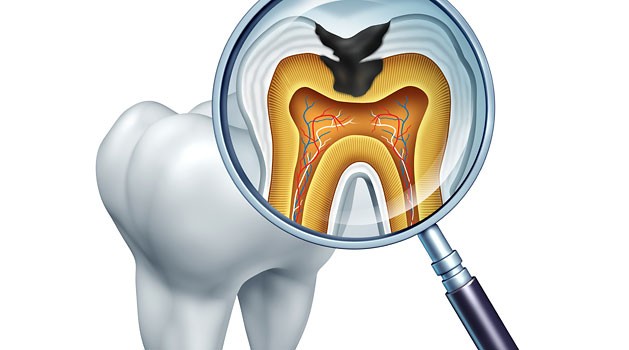
Treatment for tooth decay varies according to how severe the decay is.
- Brushing and flossing with fluoride toothpaste and/or receiving fluoride treatments may be enough to reverse early decay, before cavities have formed.
- You need a filling if a cavity has formed. A filling is a material that plugs the cavity hole and restores a tooth to its original shape after your dentist has removed the decay.
- You may need a crown if the decay is severe and your tooth is badly damaged. A crown (often called a cap) is a man-made replacement for all or part of a tooth. Crowns are also used to treat teeth that have broken or decayed so much that a filling will not work.
- You may need a root canal treatment if the pulp of your tooth is infected. A root canal removes the diseased pulp of a tooth.
- You may need your tooth taken out (extraction) if the root of the tooth is severely damaged. You may need to replace the tooth with a bridge or an implant.
If you do not treat tooth decay, your cavities can get worse and you may lose a tooth. If you wait to see your dentist, your tooth repair will probably cost more and take longer.
What to think about
Many people are very nervous before or during a dental visit. This can make going to the dentist a difficult experience. You can take steps to limit your anxiety, such as explaining your fears to the dentist and setting up a system of hand signals. Hand signals let you tell the dentist when something hurts or you want a break, even if you cannot talk.
 Find us on Facebook
Find us on Facebook

